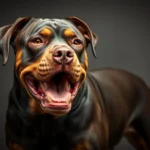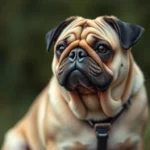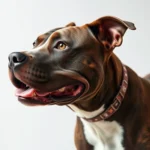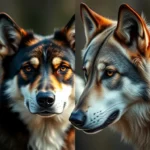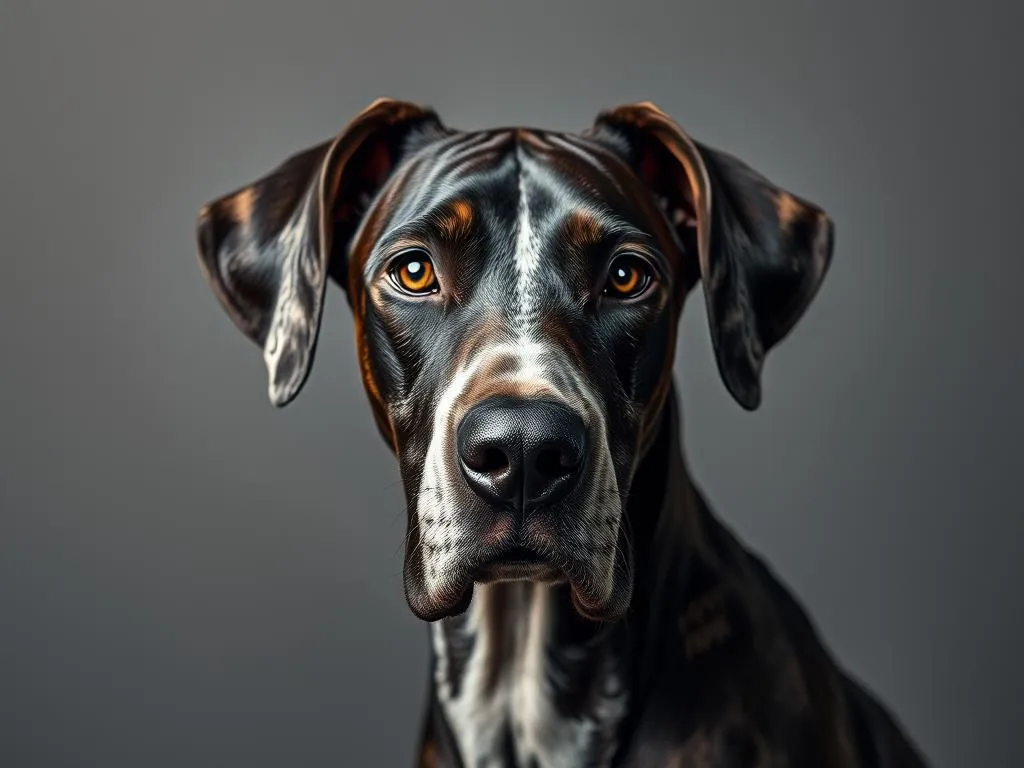
Introduction
The Great Dane is a breed that has captured the hearts of dog enthusiasts around the world. With a regal stature and an affectionate nature, these gentle giants have a rich history that dates back to ancient times. Originally bred to hunt wild boar and guard estates, their lineage traces back to the mastiffs of ancient Egypt and the hunting dogs of the German nobility. Great Danes are known for their remarkable size, loyalty, and friendly demeanor, making them wonderful companions for families.
Mixed breeds, or designer dogs, are created by crossing two different purebred dogs. The popularity of mixed breeds has surged in recent years, leading many dog lovers to explore the unique combinations that can arise from mixing a Great Dane with other breeds. Adopting mixed breeds not only offers the chance to enjoy a diverse range of traits and characteristics but also promotes genetic diversity, often resulting in healthier dogs.
Understanding Great Dane Mixes
What is a Great Dane Mix?
A Great Dane mix is simply a crossbreed that includes at least one Great Dane parent. These mixes can result from intentional breeding or accidental matings, leading to a variety of physical and behavioral traits. The characteristics of a Great Dane mix will depend on the other breed involved in the mix, which can lead to fascinating combinations.
Popularity of Great Dane Mixes
Over the years, dog breeding trends have shifted, with many people opting for mixed breeds. The appeal of Great Dane mixes often lies in their unique looks and diverse temperaments. Mixed breeds are frequently seen as healthier than their purebred counterparts due to a broader gene pool. Families looking for a companion often appreciate the charm of a Great Dane mix, which can offer the best of both worlds in terms of size, personality, and appearance.
Common Great Dane Mixes
Great Dane and Labrador Retriever
The combination of a Great Dane and a Labrador Retriever results in a friendly and intelligent dog. These mixes often inherit the Labrador’s playful nature and the Great Dane’s gentle giant persona.
- Characteristics and Traits: Expect a large dog with a well-muscled build, often sporting a short, dense coat. They can come in various colors depending on the parentage.
- Pros and Cons: Pros include their friendly demeanor and adaptability. However, they may require significant exercise due to their high energy levels.
Great Dane and German Shepherd
Mixing a Great Dane with a German Shepherd yields a protective and loyal companion. This mix often boasts a combination of the Great Dane’s size and the German Shepherd’s intelligence.
- Characteristics and Traits: These dogs usually have a strong build and a distinctive coat that can vary in color. Their intelligence makes them easily trainable.
- Pros and Cons: While they are excellent family pets, they may be wary of strangers, requiring socialization to ensure a well-rounded temperament.
Great Dane and Bulldog
The Great Dane and Bulldog mix can often result in a stocky, muscular dog that embodies the best traits of both breeds.
- Characteristics and Traits: This mix typically features a broad head and a shorter build with a smooth coat. They often have a calm demeanor.
- Pros and Cons: They are usually great with families, but potential health issues related to both breeds should be considered.
Great Dane and Poodle
The Great Dane and Poodle mix, often referred to as a Danoodle, is a fascinating combination that can result in a dog with both elegance and intelligence.
- Characteristics and Traits: These mixes can showcase a variety of coat types, including curly, which can be hypoallergenic. They tend to be very intelligent and trainable.
- Pros and Cons: Danoodles are often sociable and adaptable but may require regular grooming, especially if they inherit the Poodle’s coat.
Other Notable Great Dane Mixes
Beyond the popular mixes listed above, several other combinations are worth mentioning:
- Great Dane and Rottweiler: Known for their loyalty and protective nature.
- Great Dane and Boxer: Often energetic and playful, these dogs make excellent family pets.
- Great Dane and Beagle: A smaller mix that can be quite friendly and affectionate.
Traits and Characteristics of Great Dane Mixes
Size and Appearance
Great Dane mixes can vary significantly in size and appearance depending on the other breed involved.
- Average Size and Weight: These dogs typically range from 70 to 150 pounds, with height varying from 24 to 34 inches at the shoulder.
- Coat Types and Colors: Coat types can be short and dense or longer and curly, with colors including brindle, fawn, black, and spotted variations.
Temperament and Personality
The temperament of Great Dane mixes is often a blend of the traits from both parent breeds.
- Common Behavioral Traits: Most Great Dane mixes are known for their friendly and gentle nature. They tend to be good with children and other pets, making them suitable family companions.
- Compatibility with Families and Children: They generally thrive in family settings and enjoy being part of family activities.
Health Considerations
Like all breeds, Great Dane mixes come with specific health considerations.
- Common Health Issues: Potential issues can include hip dysplasia, bloat, and heart conditions, depending on the mix. Regular veterinary check-ups are crucial.
- Lifespan Expectations: Generally, Great Dane mixes can live between 8 to 12 years, with mixed breeds often enjoying a longer lifespan due to hybrid vigor.
Care and Maintenance of Great Dane Mixes
Nutrition
Proper nutrition is vital for maintaining the health of a Great Dane mix.
- Dietary Needs and Recommendations: High-quality dog food that meets their specific nutritional requirements is essential. Large breed formulas are recommended.
- Potential Food Allergies: Some dogs may develop allergies to common ingredients, so monitoring their diet for any adverse reactions is important.
Exercise Requirements
Great Dane mixes are active dogs that require regular physical activity.
- Importance of Physical Activity: Daily exercise is crucial to maintain their health and prevent obesity.
- Recommended Exercise Routines: Long walks, play sessions, and mental stimulation are vital to keep them engaged and happy.
Grooming Needs
Grooming will depend on the mix, but generally, Great Dane mixes require regular maintenance.
- Grooming Frequency and Techniques: Depending on the coat type, grooming may range from weekly brushing to daily care for longer coats.
- Specific Grooming Challenges for Mixes: Some mixes may require special attention to grooming, particularly if they inherit a coat that tangles easily.
Training and Socialization
Importance of Early Training
Starting training early is crucial for Great Dane mixes.
- Benefits of Early Socialization and Training: Early training helps in developing well-rounded dogs. It reduces the likelihood of behavioral issues later in life.
Effective Training Techniques
Using positive reinforcement techniques works best for training Great Dane mixes.
- Recommended Training Methods: Employing treats, praise, and play can motivate these dogs to learn commands and good behaviors.
Socialization Tips
Socializing your Great Dane mix is vital for their development.
- How to Introduce Great Dane Mixes to New Environments and Other Animals: Gradual introductions to new people, pets, and environments help them become more adaptable and less anxious.
Adoption and Buying Considerations
Where to Find Great Dane Mixes
Finding a Great Dane mix can be done through various avenues.
- Shelters, Rescues, and Breeders: Many mixed breed dogs are available for adoption at local shelters and rescues, and reputable breeders may also have mixed breeds.
What to Look for in a Responsible Breeder
If considering purchasing a Great Dane mix, it’s essential to choose a responsible breeder.
- Key Questions to Ask: Inquire about health screenings, socialization practices, and the overall environment the puppies are raised in.
- Red Flags to Avoid: Be wary of breeders who do not provide health guarantees or who seem disinterested in the puppies’ well-being.
Adoption vs. Buying
When it comes to acquiring a Great Dane mix, both options have their pros and cons.
- Pros and Cons of Each Option: Adoption is often more affordable and provides a home for a dog in need. Buying from a breeder can offer a clearer understanding of the dog’s lineage and potential health issues.
Conclusion
Exploring the world of Great Dane mixes reveals a diverse array of traits and characteristics that make them appealing companions. From their unique sizes and temperaments to the health considerations and care requirements, these mixes provide a wonderful option for families and individuals alike. The benefits of adopting a mixed breed dog are plentiful, offering a chance to bring home a loyal friend while contributing to the well-being of our canine companions.
Great Dane mixes are a fantastic choice for those who appreciate the gentle nature of the breed but desire a blend of characteristics that mixed breeds offer. Whether you’re drawn to the playful nature of a Great Dane and Labrador Retriever mix or the elegance of a Great Dane and Poodle, there’s a perfect match out there waiting for you.
By considering the adoption of a Great Dane mix, you not only gain a beloved pet but also contribute to the health and diversity of the dog population.



